CHALAYAN SS20
- 5' ELEVEN''

- Jun 10, 2019
- 2 min read

Bourdon Street, Mayfair, London. June 9th, London.
In the midst of our daily lives, we take behavioural codes and the invisibility or the confidence of the body for granted. At times we are lost in euphoric exoticisation of the body, but we barely question how physical presence and demeanour can be affected or moulded by various historical events which took place in the world.
In this light 'The Postcolonial Body' is a study of dance and movement amongst various ethnic groups which have been colonised by Western forces. America and Japan have been the two main focus points of inspiration. South America as the example of deeper infiltration of colonial attitudes stemming back to Spanish and Portuguese occupation between the 16th and 19th century, whilst Japan as a much shorter-lived example, but one which has become subject to remarkable consequences, where economic, cultural, and social landscape has been heavily moulded by the US invasion of 1945-1952.
The collection fuses dance and movement from South American dance genres and Japanese ritual enactments celebrating seasonal rites of fertility and abundance. Part imaginary, part a study, the clothes are conceived in a spirit of enforced joy and a protest at the same time. The clothes and the fabrications: The structure of the clothes is inspired by drapes mimicking moving bodies, from genres which essentially fuse dance of the European immigrants, former slaves and working classes of people, as well as looking at a contemporary dance which instigates a sense of physical discipline and restraint.
While the collection is imbued with the above themes, the shapes and surfaces of the Chalayan wardrobe remains wearable and practical.The sartorial wool tailoring punctuated by graphic rope compositions stemming from exercises in physical discipline come in navy subtle stripes and grey and black checks. Classic cotton stripes are mixed in crisp shirting with inserted panelling. Multicoloured stripes in jerseys have a celebratory summer feel, visible at times hidden under layers. Summer cotton tailoring comes in 3 different stripes with a charming woven texture. The House Chalayan blue and white stripe 'happiness code' comes in cotton weave specially developed in Japan, seen this time as outerwear and separates.
Light linen mixes in burnt orange, sand and navy come in pieces which have an institutional feel, where the shapes triggered by dancing bodies lead to subtle graphic punctuations. Outerwear inspired by movement to an extent where air can be trapped into the clothes, come in paper cotton in navy and mushroom. Prints depict indigenous Japanese rituals which have not changed in centuries, fused with step instructions from Tango printed on silk. Another print depicts a forest with different ethnicities
coupling up to ‘please’ the white colonisers so to speak. A heat struck straw print acts as a semi- otic base, transporting us to South America and Japan at the same time. The colours consist of
navy, mushroom, burnt orange, sand, red lime, pale blue and yellow.


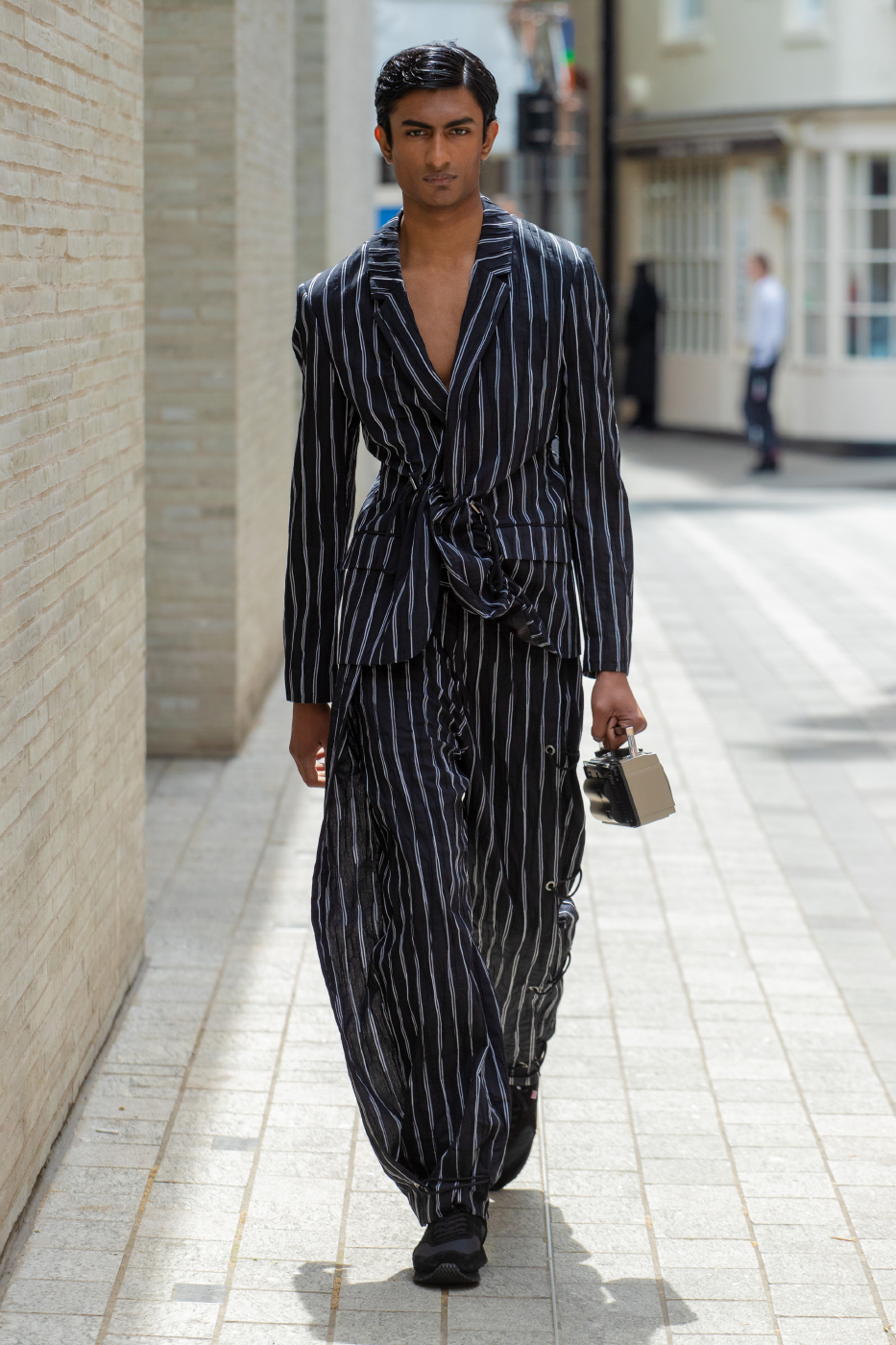

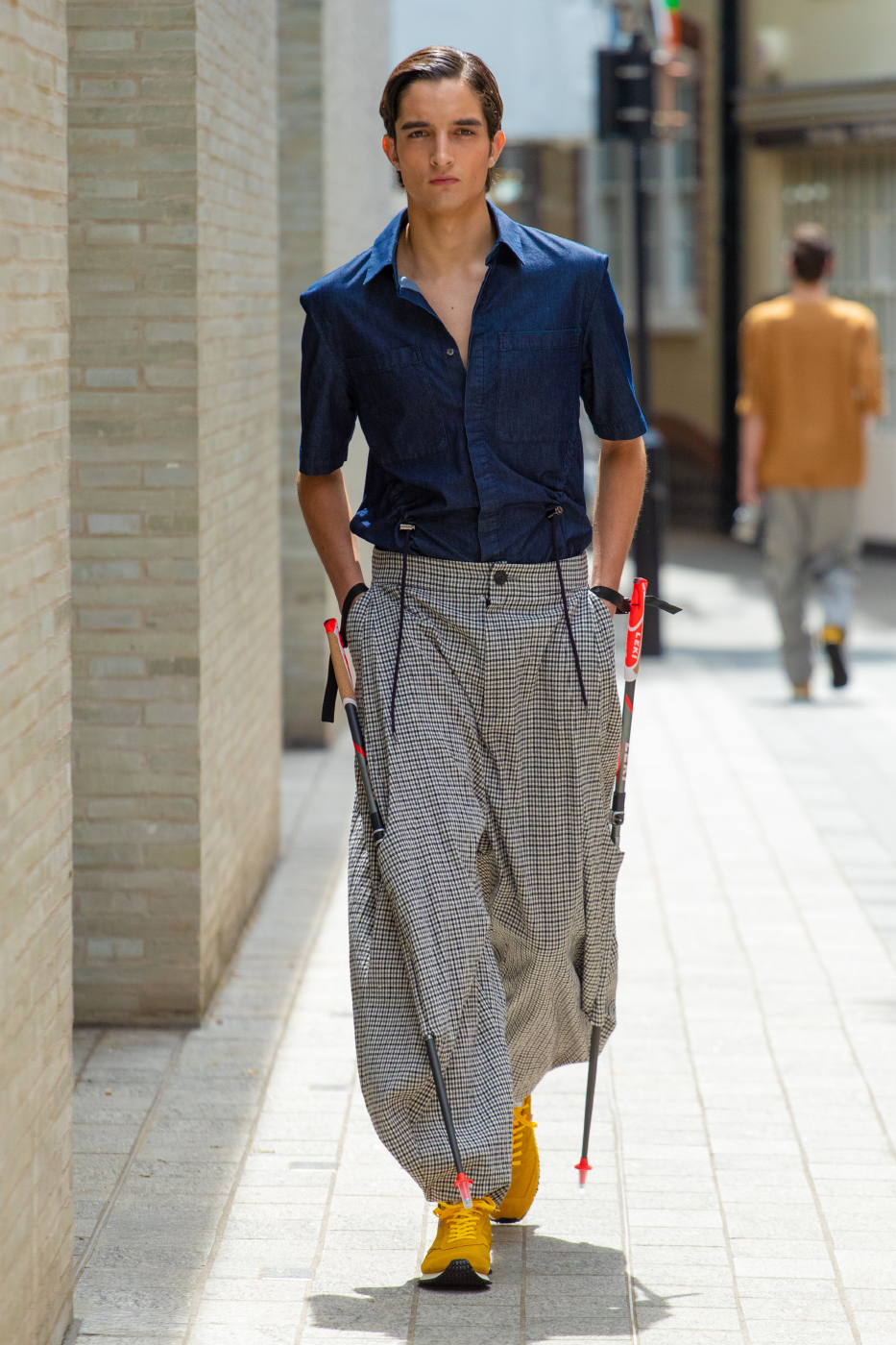





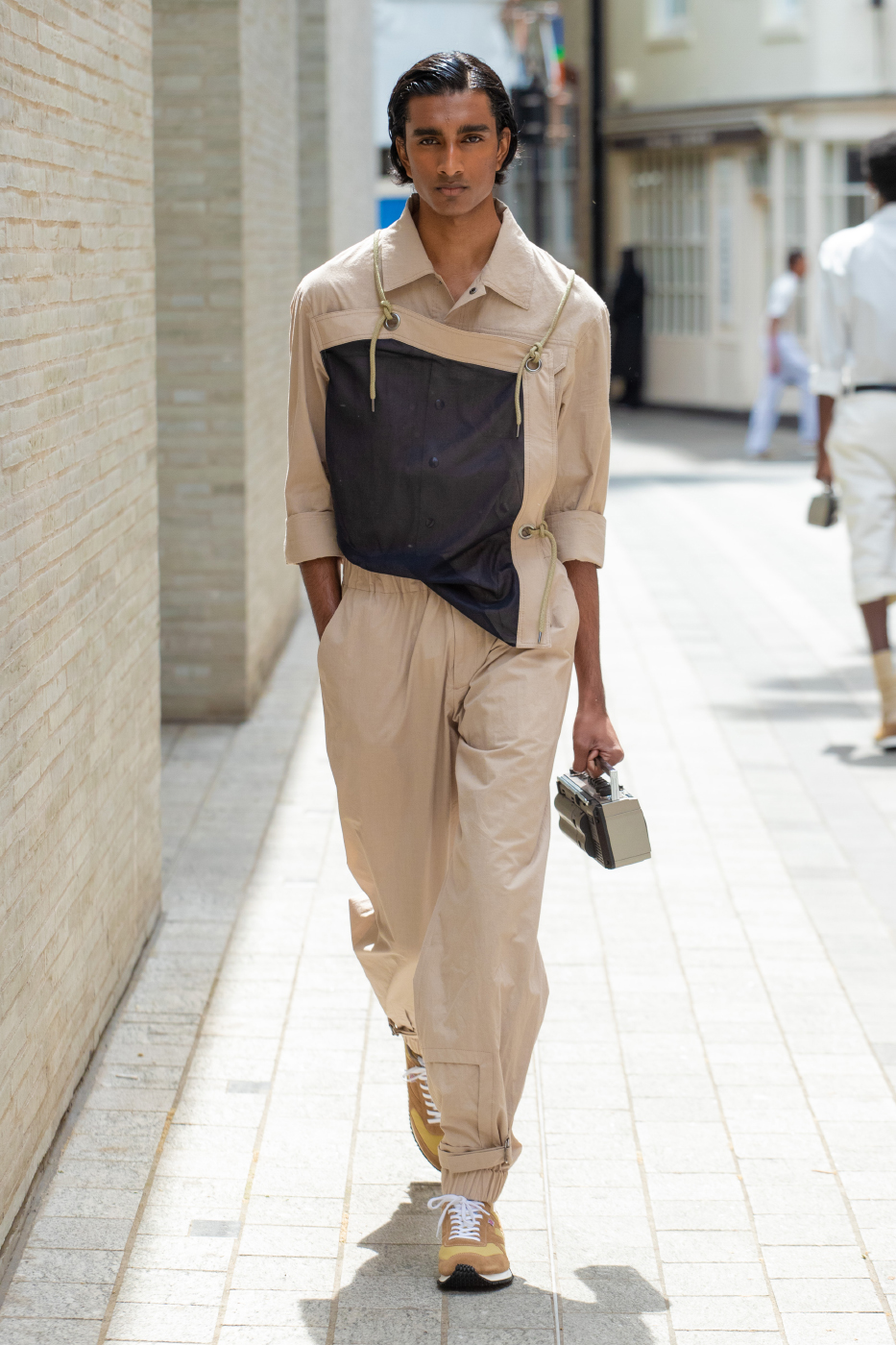

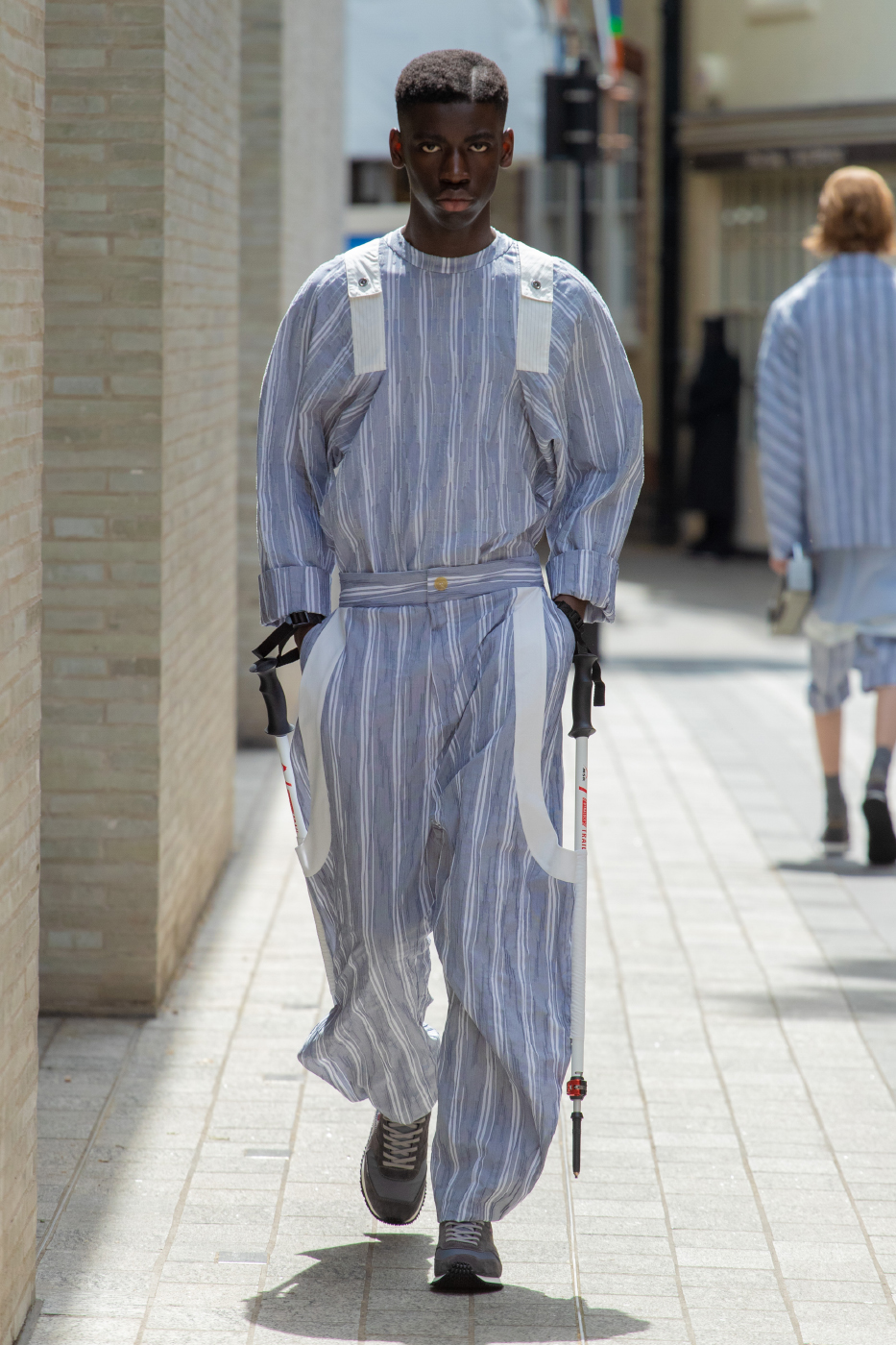

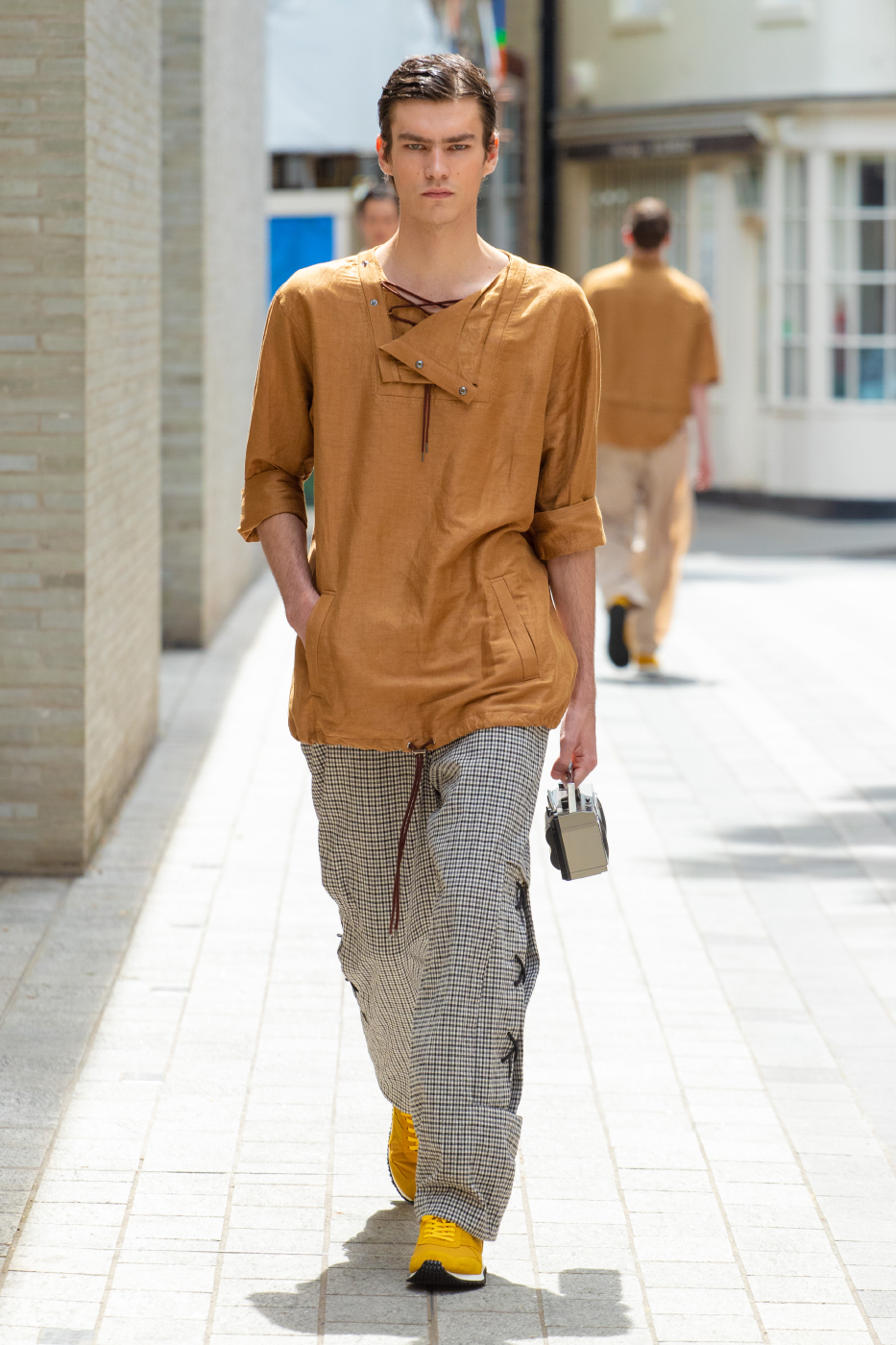

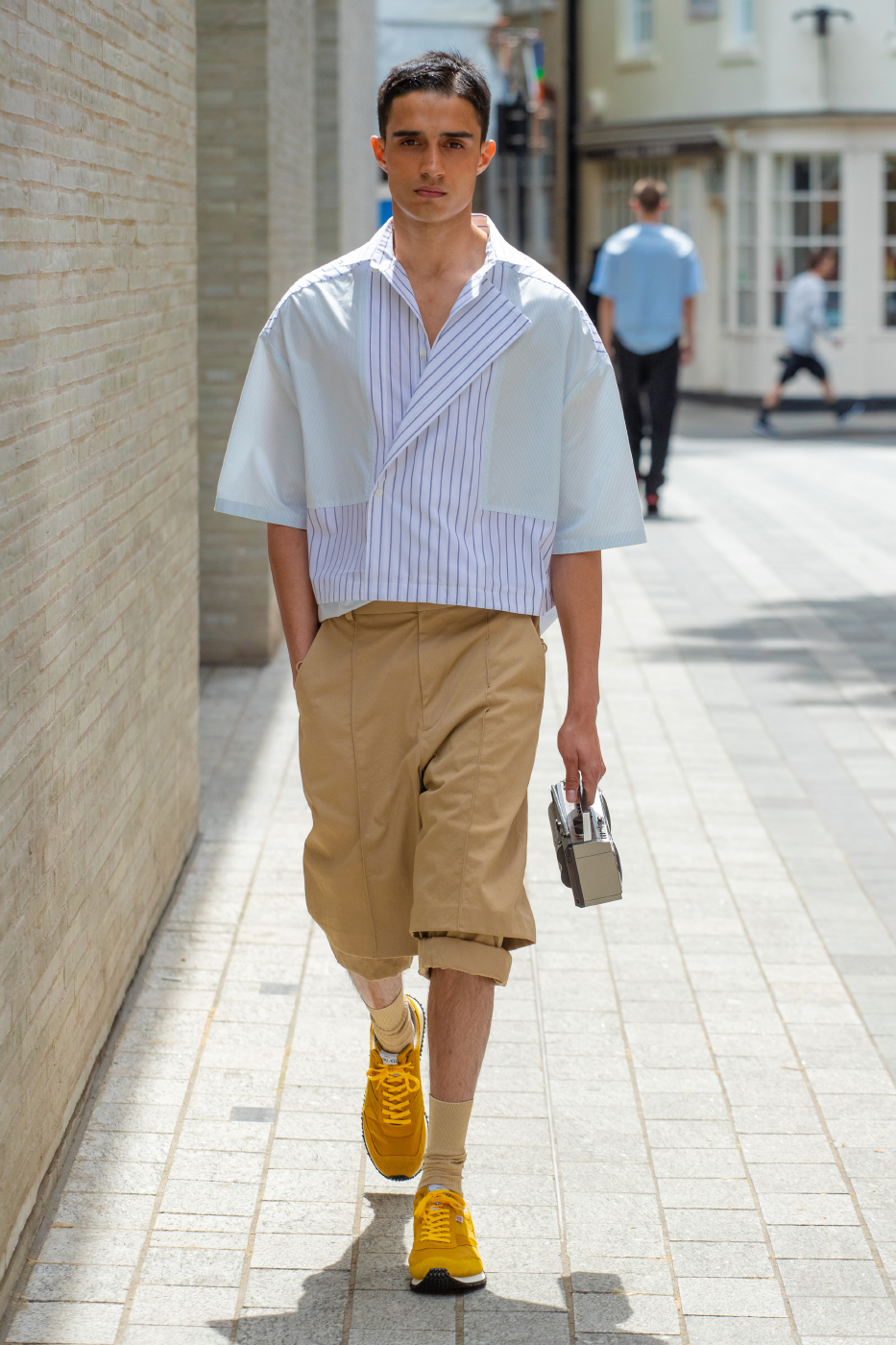

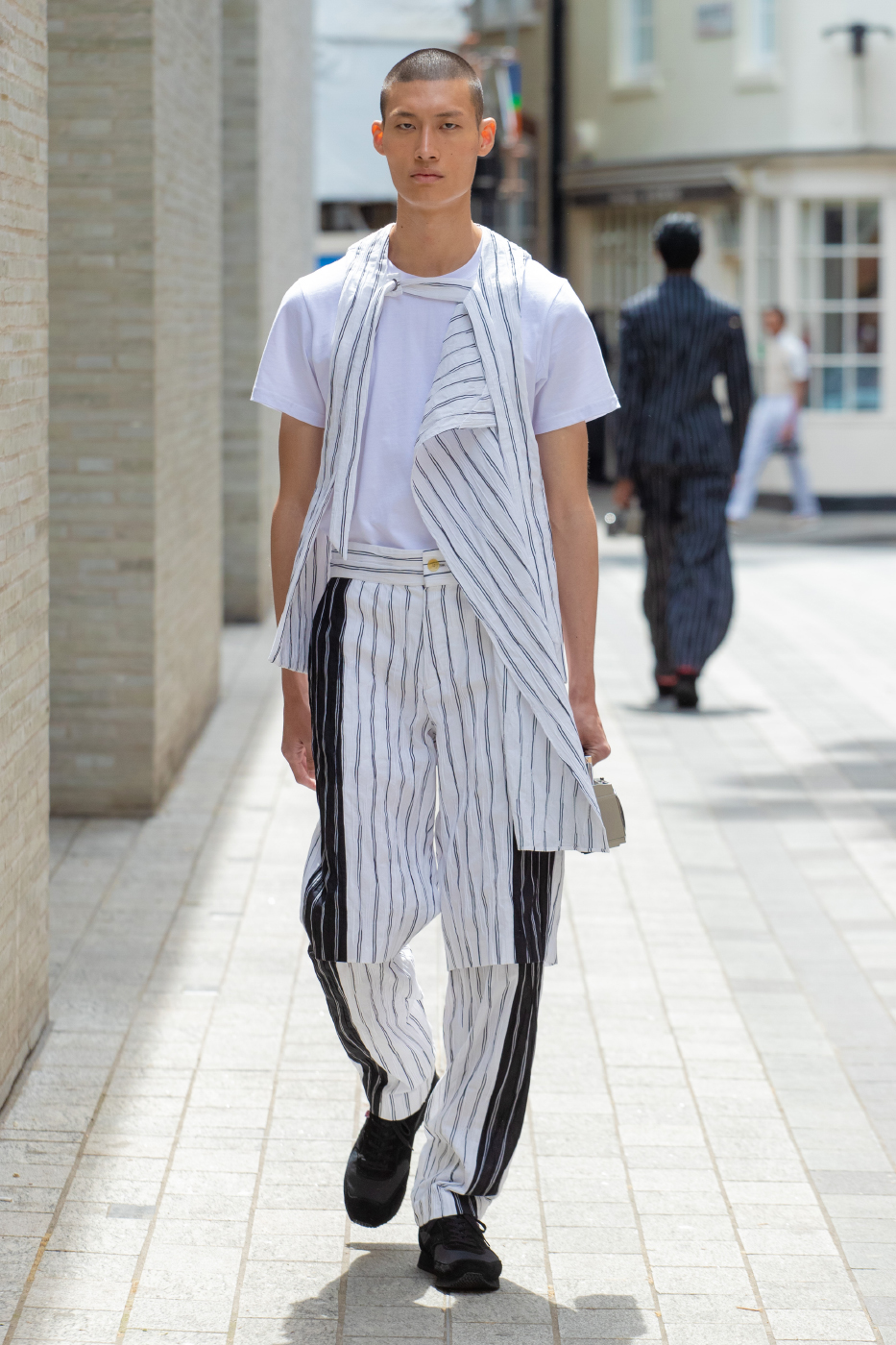

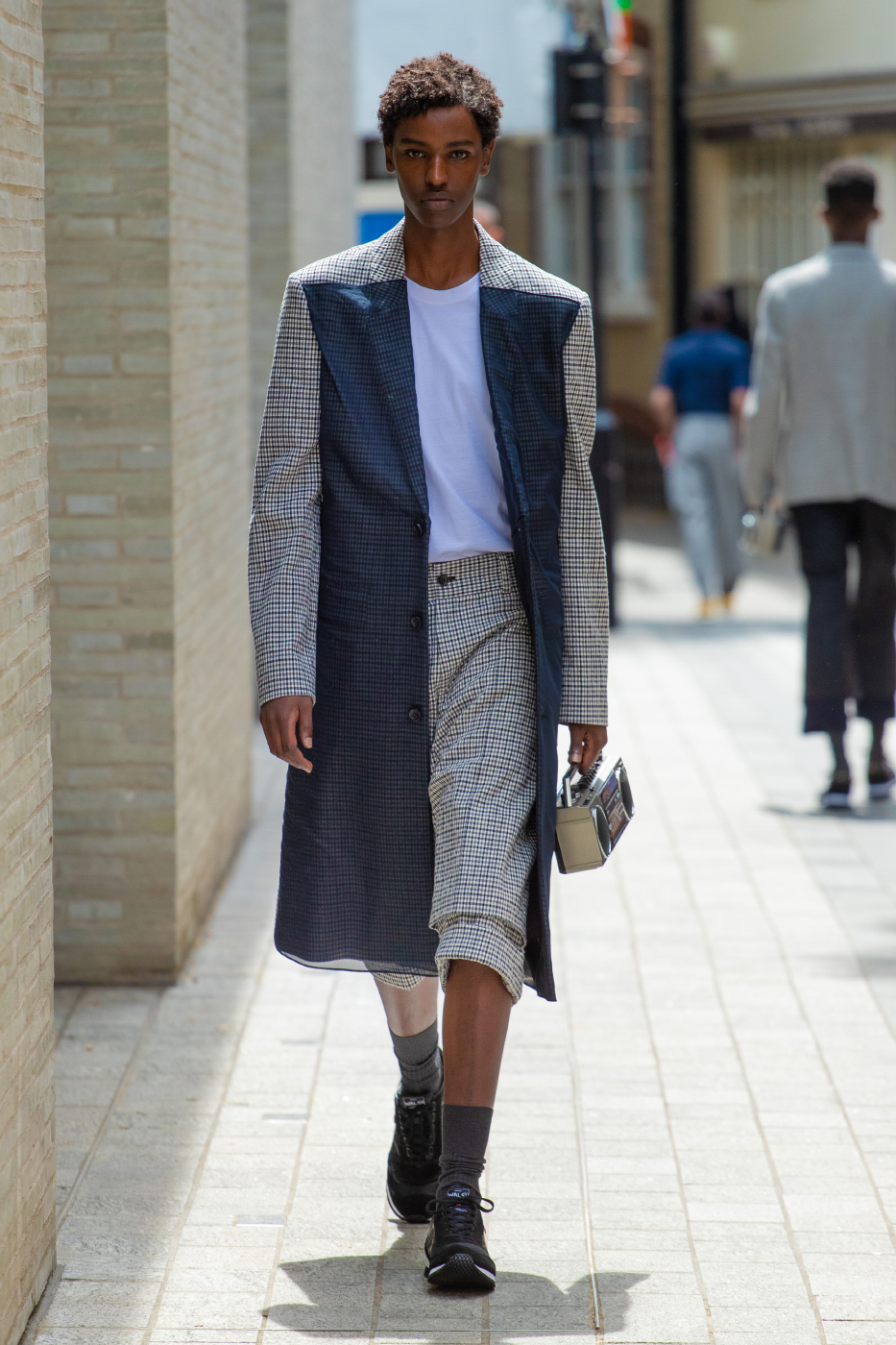

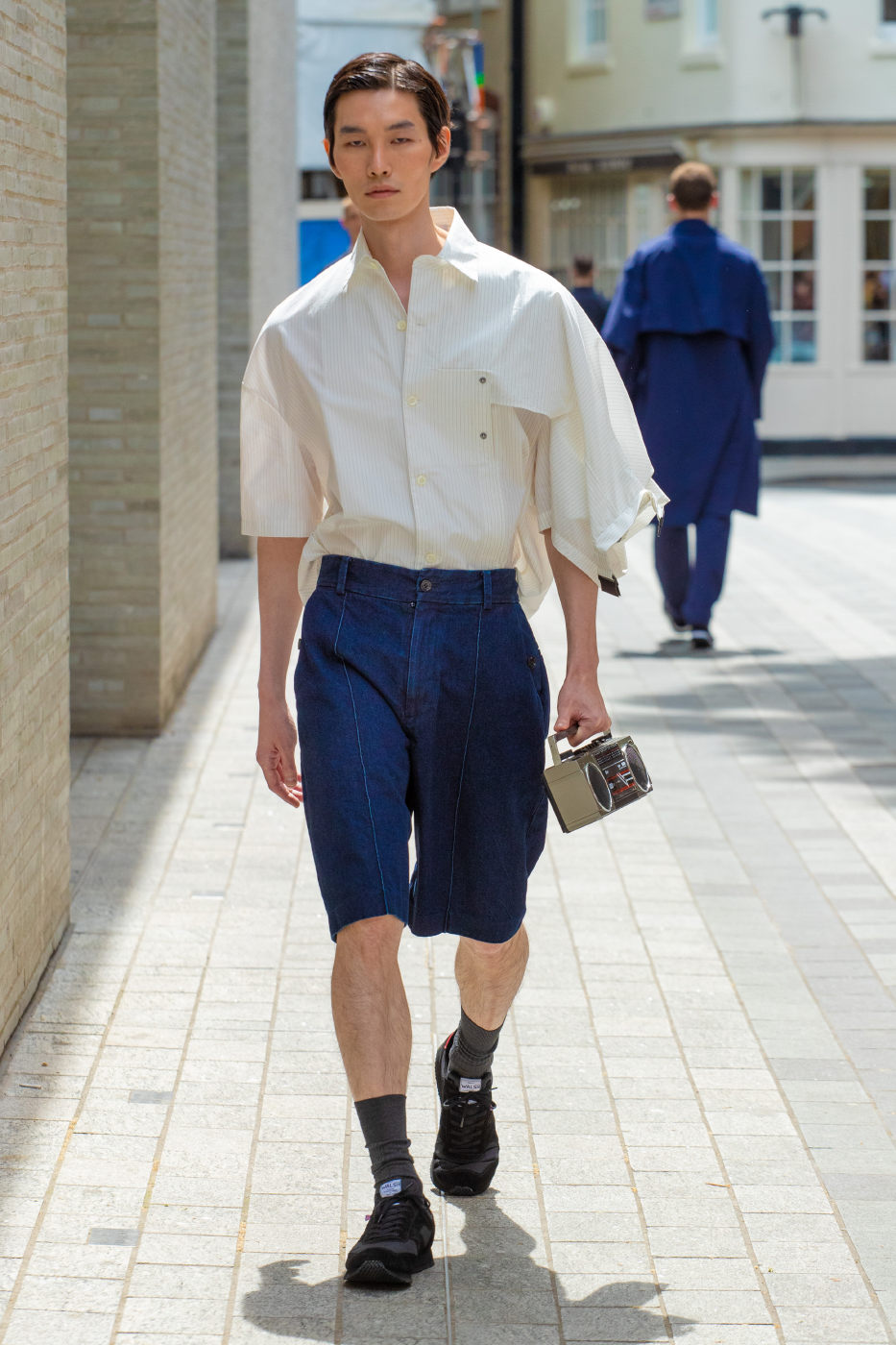


Comments